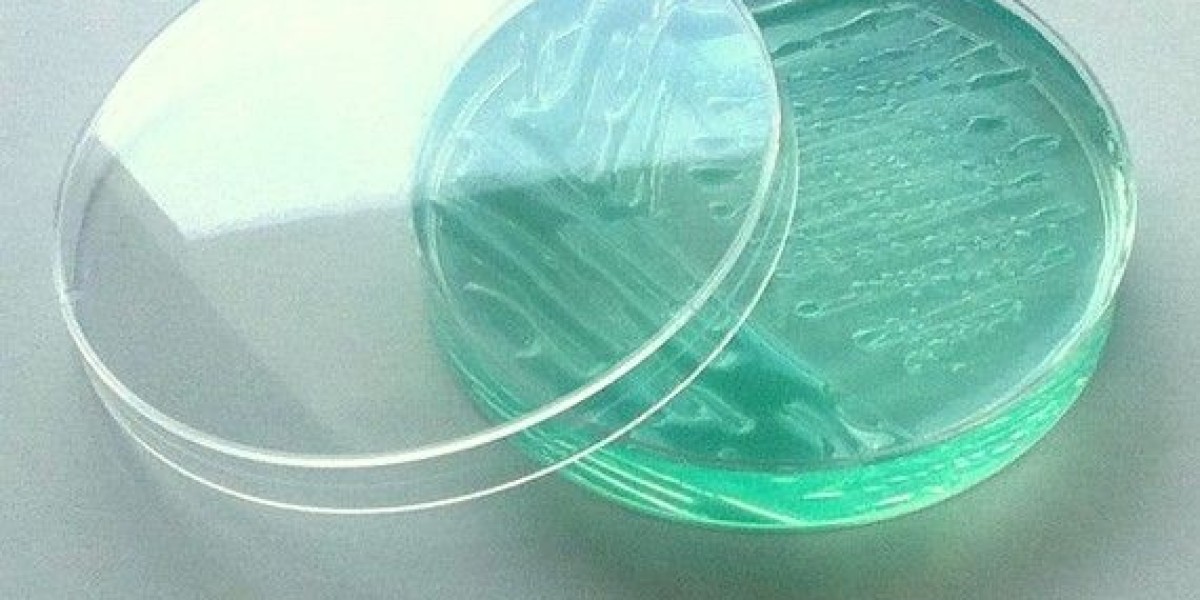The Origins
Petri dishes were invented in the late 19th century by German bacteriologist Julius Richard Petri. As a microbiologist studying at the University of Berlin, Petri was looking for a better way to grow bacteria and observe microbial colonies. In 1887, he designed a shallow, circular glass container with a cover that allowed visibility from both the top and bottom. This novel design provided scientists with an improved system for studying microbial growth on solid surfaces under controlled laboratory conditions. Petri's invention revolutionized the study of microbiology and helped advance scientific understanding of infectious diseases.
Preparing Nutrient Agar Plates
To use a Petri Dish properly, it must first be prepared with a sterile growth medium. The most common medium is nutrient agar, a jellified mixture of nutrients and water that provides microorganisms with food and moisture. The agar sets into a solid gel that supports colony growth. Scientists sterilize agar by autoclaving it at high temperatures to kill any contaminating microbes. Once cooled but still in liquid form, the agar is poured into the sterile Petri dishes under aseptic conditions to prevent contamination. The agar solidifies as it cools, forming a flat surface.
Observing Colony Morphology
They allow scientists to isolate single microbial cells and observe how they grow and interact. When microbes are streaked or dotted onto the surface of nutrient agar, each one founders its own colony. Over the course of several days, these colonies multiply and spread. Their shape, size, color, texture and other distinguishing characteristics are known as colony morphology. By examining morphological differences between colonies, researchers can gain insights into microbial taxonomy, physiology, metabolism and more. Colonies may be circular, filamentous, punctiform or have irregular margins depending on species and growing conditions.
Detecting Microbial Contamination
A key application of the Petri dish technique is for microbiological quality control testing. Food, water, pharmaceutical and other manufactured products are routinely analyzed for contaminants using agar plate methods. Samples are obtained, diluted if necessary, and plated by spreading or streaking aliquots on selective and differential agars. These agars are formulated to encourage or inhibit the growth of target vs. non-target microbes. After incubation, the number and types of colonies provide a quantitative and qualitative assessment of microbial load and safety. They enumerate bacteria, mold and yeast colonies with ease, allowing contaminants to be detected even when present in very small amounts.
Antibiotic Susceptibility Testing
In the medical field, they play an important role in antimicrobial susceptibility testing to determine effective antibiotic treatment options. A lawn of bacterial growth is established by flooding nutrient agar plates with a standardized microbial suspension. Antibiotic discs or strips impregnated with different drugs are applied to the surface. As the antibiotics diffuse outward, zones of inhibited bacterial growth appear around each disc after overnight incubation. The size of these zones corresponds to an organism's sensitivity or resistance to that particular antibiotic. This disk diffusion method guides empiric antibiotic therapy for infectious diseases.
Limitations of the Petri Dish Technique
While revolutionary in its time, they does have some limitations. It only supports the growth of microbes able to thrive on solid surfaces aerobically. Fastidious organisms requiring special nutrients, anaerobic environments or attachment/ biofilm substrates cannot always be reliably cultured. Some microbes may enter a viable but non-culturable state rather than forming colonies. Petri dishes likewise fail to capture microbial interactions that occur in complex, three-dimensional communities rather than as isolated colonies. Advances in microscopy, molecular techniques and microfluidic systems now complement traditional agar plating by offering new insights into these uncultured and community-level dynamics. Nonetheless, the simple yet highly effective Petri dish design perfected by Julius Petri over 130 years ago remains the cornerstone of microbiology even today.
Get More Insights on Petri Dish
Identify the language that you favour-
About Author-
Ravina Pandya, Content Writer, has a strong foothold in the market research industry. She specializes in writing well-researched articles from different industries, including food and beverages, information and technology, healthcare, chemical and materials, etc. With an MBA in E-commerce, she has an expertise in SEO-optimized content that resonates with industry professionals. (https://www.linkedin.com/in/ravina-pandya-1a3984191)










